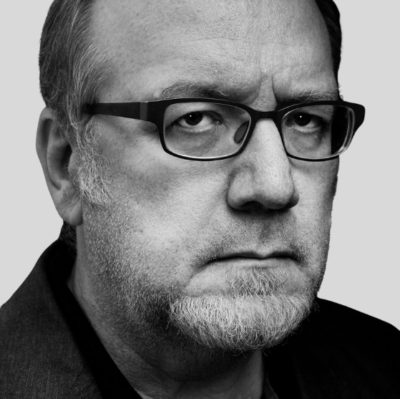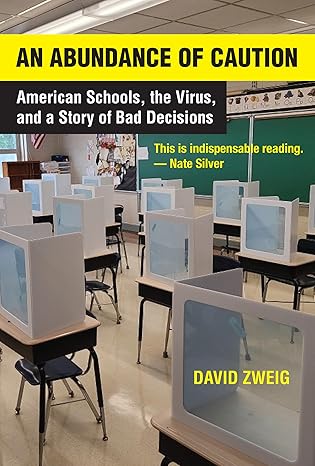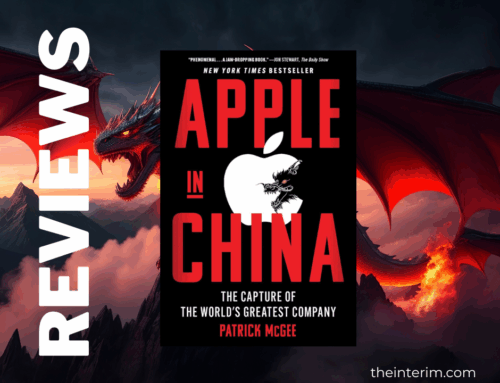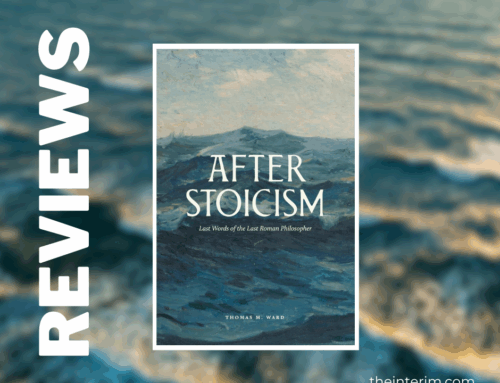Rick McGinnis:

Interim writer, Rick McGinnis, Amusements
On May 20, 2020, just two months into the COVID-19 pandemic lockdowns, New York governor Andrew Cuomo gave one of his daily press conferences – a “state of the plague” address of sorts, reliably covered in the legacy media. (He would win an Emmy for “masterful use of television to inform and calm people around the world.”)
As recalled by David Zweig in his new book An Abundance of Caution: American Schools, the Virus, and a Story of Bad Decisions, eight minutes into his briefing Cuomo changed from reciting the current statistics to talk about education, and his “vision for the future.” In front of a slide with the words “Reimagine Education” Cuomo talked about how remote learning – by now mandated almost everywhere in the U.S. and Canada and in many other western countries – shouldn’t be an emergency measure but a chance to move into a new educational model.
his briefing Cuomo changed from reciting the current statistics to talk about education, and his “vision for the future.” In front of a slide with the words “Reimagine Education” Cuomo talked about how remote learning – by now mandated almost everywhere in the U.S. and Canada and in many other western countries – shouldn’t be an emergency measure but a chance to move into a new educational model.
“Here was America’s governor,” Zweig writes, “the Emmy Award winner, the man who had steadied the ship, now telling the country, the world even, that remote learning, the scourge of millions of children and embittered parents, was actually quite excellent. So excellent that actual classrooms with people? That was old-timey school. Remote learning – that was the vanguard.”
He announced that his state would partner with the Bill & Melinda Gates Foundation to advance the ideas about technology and education that the Microsoft founder had been pushing for years. “When does change come to a society?” Cuomo asked. “You get moments in history where people say ‘I’m ready for a change.’ This is one of those moments.”
Zweig’s book – like In Covid’s Wake by Stephne Macedo and Frances Lee, which I wrote about in my last column – is a serious and unsensational analysis of the impact of the lockdown era that avoids speculating about vaccine damage and the agendas of the World Economic Forum.
But anecdotes like this, where Cuomo admits that he’s reading from the “in crisis, opportunity” playbook to push an agenda nobody had asked for even before they had mandatory experience of it en masse, are precisely the kind of thing that stoke conspiratorial thinking and a suspicion that the years 2020-2022 were a massive social experiment.
Like Macedo and Lee, Zweig writes that the Non-Pharmaceutical Interventions (NPIs) that dominated our lives from the moment we were told to stay home for two weeks to “flatten the curve” — sheltering in place, masks, social distancing, and school closures – were not part of any pandemic planning up until just over a decade earlier, when a new plan predicated on data modeling fell into place during the George W. Bush presidency.
Zweig, a journalist, made school closures his focus when he began researching the mostly unprecedented policies that were suddenly forced on millions of families like his, when March stretched into April and then into May and nobody was talking about kids going back to school.
He kept reading that the models had predicted that schools would be a major vector of infection for the disease and that for the safety of children all the NPIs would focus on school-age children in what was described as “an abundance of caution” – a phrase he noticed being repeated over and over.
“Yet caution was never defined,” Zweig writes. “The caution of school closures was different for a wealthy teenager, with his own bedroom, MacBook, tutors, and parents working from home, there to help him if needed, than it was for an underprivileged third grader, with no computer or internet access, taken care of by a single parent who had to work outside the home, than it was for a middle-class kid with an abusive stepfather in the house, than it was for a child with attention deficit disorder whose brain was cognitively incapable of ‘remote learning’ for more than a few minutes. An abundance of caution was experienced very differently by different kids and different families. And ‘Caution’ only ran in one direction.”
The new, more severe lockdown plans were based on models that saw schools as a major vector of infection, but the problem was that the models were deeply flawed, filled with assumptions and shoddy data – what Zweig calls “garbage in, garbage out.”
“The public was told that closing schools was one of the most, if not the most effective means of controlling the spread of the coronavirus,” he writes. “If that claim were based on models that were based on incorrect numbers – which, given that some of them are made up, is quite assured – that’s a big problem.”
But even when the first numbers were available within in a couple of months after lockdowns started – transmission statistics from European countries like Sweden which never closed their schools, and from daycares on the U.S. east coast set up for the children of essential workers – it did little to alter the official position that schools were the most and not among the least virulent hot spots for the virus (with an infection rate of 0.1 per cent or less).
“Believing in the effect of interventions – and imposing them on the citizenry – without scientific validation meant we were following a model of public health that was faith-based,” Zweig writes, “as opposed to evidence-based. This was even more bizarre because with European schools and American daycares, where many or most of these interventions were not in place, we had copious evidence that if they offered any benefit at all, it was not meaningful. Decisions were guided not just by faith in the unknown, but faith against observable reality.”
Zweig writes how government officials and politicians were eager to do anything, effective or not, simply because the optics for action were more appealing than doing nothing. The so-called logic for this was provided by Anthony Fauci on March 15, 2020 when he said, “if it looks like you’re overreacting you’re probably doing the right thing.”
Personally, most disturbing of all was how few questions the media asked about this radical re-ordering of our lives from the top down, and how willing they were to simply parrot official statements and whatever numbers were provided by the Centers for Disease Control and public health officials. Despite the available numbers showing that schools were not superspreaders, newspapers like the New York Times (led by their lead pandemic reporter Apoorva Mandavilli) stuck to a narrative that insisted on the opposite. This effect of this disinformation was revealed in a 2020 Gallup poll where, as Zweig recalls, “Democrats thought the share of COVID deaths for people under age twenty-five was eighty-seven times higher than the actual proportion.”
This is a marker of the tribalism that was even more ramped up as 2020 was an election year, so when President Donald Trump finally came down firmly on re-opening schools with an all-caps tweet on July 6, 2020 (“SCHOOLS MUST OPEN IN THE FALL!!!”) everyone opposed to him was obliged to come down on what was already the default position of officials, and the majority of schools in the U.S. stayed closed or opened under “hybrid” models that were no real substitute for what students could enjoy in most of Europe, Israel, and Japan.
Where you stood on masks, on social distancing, on reopening businesses and returning to offices and schools became a political marker, and since the official line was that caution – abundant, even excessive – was the only right and proper course of action, dissent was discouraged and even harshly punished. (Zweig frequently mentions medical professionals who agreed to talk to him confidentially, admitting that opposing the status quo to their colleagues could be professionally disastrous.)
“There was a certain willful dishonesty and fantasy,” Zweig writes, “to the idea that making children sit alone, staring at screens, isolated in their homes, for hours each day, for weeks, and then month after month after month was going to be anything other than a tragedy for many children. Even those who apparently didn’t suffer academically still lost something social and psychologically.”
“Childhood is achingly brief,” he says in conclusion. “For many kids, school closures have left them with indelible memories of trauma or hardship. For others, the lasting scar will be one of absence. Robbed of a physical experience – the sites, the smells, the feeling of laughing sitting next to a friend – the film scroll of childhood memories for many children of the pandemic may likely suffer from a strange and conspicuous jump cut over a vast expanse of time in the early 2020s. Their lives left with an empty space of precious, missing scenes that never happened.”




